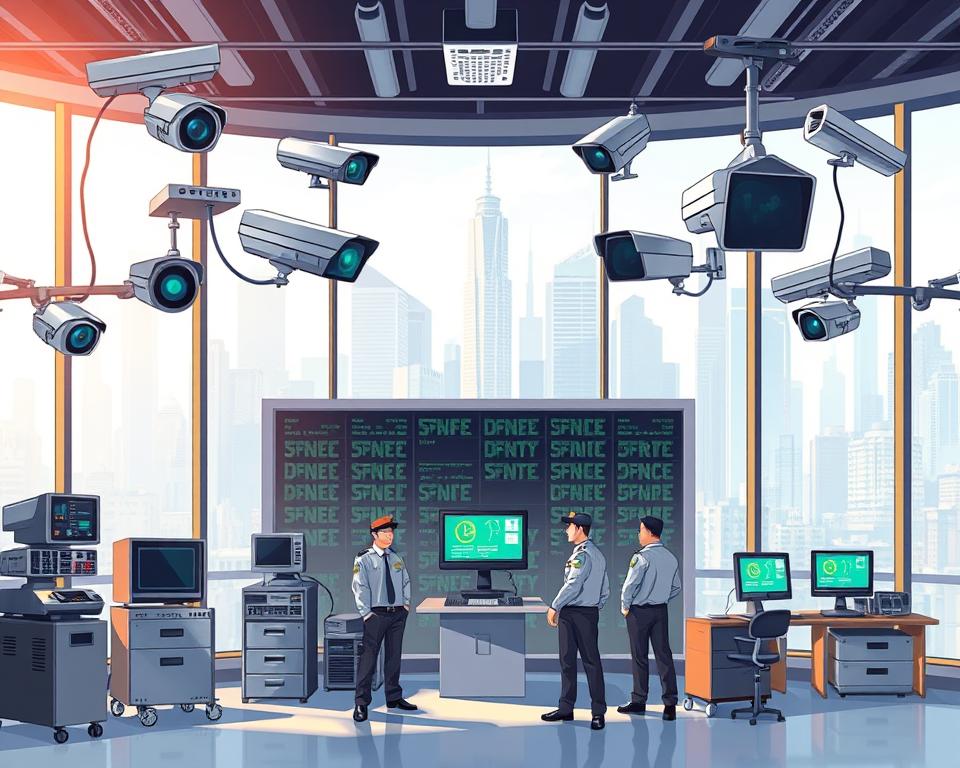Your Comprehensive Resource for FTTH cable Production Line
Welcome to the ultimate guide to FTTH cable production line. This comprehensive article will explore the realm of fiber optic cables and their vital function in facilitating high-speed data transmission. Because the need for faster and more reliable internet connectivity keeps rising, comprehending the intricacies of FTTH cable production is crucial. This guide will offer you valuable insights into the production of compact fiber unit, covering everything from the fundamentals of cable infrastructure to the detailed manufacturing process.
If you’re just starting out in the industry or want to better your understanding, this guide is for you. This guide will delve into the essential components of FTTH cable systems, the function of optical fibers in FTTH technology, and how raw materials are turned into top-quality fiber optic cables. Moreover, we will examine design considerations, stranding techniques, buffering and jacketing processes, and the efficient working of the FTTH cable production line.
Look out for information on the advanced technologies that are changing FTTH cable manufacturing, as well as the vital role of testing and quality assurance in guaranteeing the reliability and durability of fiber optic cables. Also, we will examine the last phases of packaging and distribution, ensuring the FTTH cable production line functions smoothly from the initial stage to the final one.
Essential Information:
- The FTTH cable production line is essential for delivering high-speed data transmission.
- Understanding the basics of FTTH cable infrastructure and key components is crucial.
- The production of FTTH cable, from silica to fiber, includes fiber drawing, coating application, and testing as sequential steps.
- To optimize performance, it’s important to design configurations and layouts that meet specific network requirements.
- Stranding techniques and central strength members contribute to the support and protection of the fiber.
Understanding FTTH cable Production Basics
A clear understanding of the cable infrastructure, key components, and the role of optical fibers in FTTH technology is essential to comprehend the FTTH cable production process.
Fundamentals of FTTH cable Infrastructure
The FTTH cable infrastructure refers to the network of cables, connectors, and distribution points that enable the transmission of data in fiber-to-the-home (FTTH) systems. This infrastructure serves as the foundation for high-speed internet connectivity, enabling smooth data transfer between the network of the provider and the location of the end user.

Essential Elements of FTTH cable Systems
To ensure data transmission is smooth and efficient, FTTH cable systems rely on several key components working in unison. These components include:
- The data signals are carried by these fiber optic cables in the form of light. Ensuring fast and reliable data transmission, they are designed to provide high bandwidth and low signal loss.
- Crucially, connectors join fiber optic cables to other cables or devices, and they also make it easy to connect and disconnect cables when needed. A secure and reliable connection is provided by them, which helps minimize signal loss.
- Distribution points serve to divide and distribute fiber optic signals among multiple end users. Ensuring that each user gets the right amount of bandwidth without affecting the overall network performance is one of their functions.
Why Optical Fibers are Key to FTTH Technology
FTTH technology relies heavily on optical fibers. Efficient transmission of data signals in the form of light pulses is the purpose of these thin strands of glass or plastic. With their high bandwidth capacity, low signal loss, and immunity to electromagnetic interference, optical fibers are the perfect choice for high-speed data transmission.
The fibers are made of a core, which carries the light signals, surrounded by a cladding layer that reflects the light back into the core, preventing signal loss. This construction allows optical fibers to transmit data over long distances without degradation in signal quality or speed.
The Journey from Silica to Fiber: A Step-by-Step Guide
The Art of Fiber Drawing: Creating the Cable’s Core
Fiber drawing is the initial step in the FTTH cable production process, and it’s where the cable’s core is made. Pulling and stretching a glass preform made of silica is how this process creates a long, thin fiber. Careful control of the fiber’s diameter during fiber drawing is essential for optimal performance. The quality and composition of the core are crucial in determining how efficiently and accurately the cable can transmit data.
Making Sure It Lasts: The Coating Application Process
After the fiber drawing process, the next step is coating application. The fiber receives a protective layer, known as a coating, at this stage. Serving multiple functions, the coating acts as a buffer against external factors like moisture, which enhances the fiber’s long-term durability and reliability. Careful selection of the coating material ensures it has the right mechanical properties, which keeps the fiber intact and protected for its entire lifespan.
Ensuring Quality: Fiber Testing Throughout Production
Throughout the FTTH cable production process, fiber testing is conducted at various stages to verify the quality and performance of the fiber. Measurements of the fiber’s physical parameters, such as diameter, attenuation, and tensile strength, are taken during testing, along with inspections of the coating’s uniformity and adhesion. The overall quality and performance of the final FTTH cables are guaranteed by these crucial tests, which ensure the fiber meets the necessary standards and specifications.
| Production Stage |
Parameters Tested |
| Fiber Drawing |
Diameter, Attenuation, Tensile Strength |
| Coating Application |
Coating Thickness, Uniformity, Adhesion |
Table: Testing Parameters at Different Stages of FTTH cable Production
This table provides a summary of the testing parameters that are measured at various stages of the FTTH cable production process. Rigorous testing allows manufacturers to guarantee that each fiber used in the cables meets the required quality standards, ultimately contributing to the high-performance and reliability of FTTH cable systems.
Design Considerations for FTTH cable Configurations
In the realm of fiber-to-the-home (FTTH) cable production, cable configuration design is key to fulfilling network requirements and optimizing performance. Factors like network capacity, how easily it can be expanded, and the desired speed of data transmission are all part of cable design. Efficient deployment and maximized capabilities of their network infrastructure are achieved by companies that tailor cable configurations to their specific needs.
You can choose from a variety of FTTH cable configurations and layouts, and each one has its own advantages and considerations:
- Daisy Chain Configuration: In this configuration, each subscriber is connected sequentially to the main distribution point. For areas with a small number of subscribers, this configuration is a cost-effective solution.
- In the star configuration, the central office or hub is directly connected to each subscriber. This design offers flexibility and makes maintenance easy, which makes it great for areas with a lot of people.
- In the ring configuration, subscribers are connected to form a circular loop. Redundancy and the ability to keep working even if there’s a fault are features of this configuration, ensuring service continues if the network fails.
- A tree configuration involves the main distribution point connecting to secondary distribution points, which in turn connect to individual subscribers. This configuration allows the network to grow easily and is often used in areas where there are a lot of subscribers.
- Mesh Configuration: The mesh configuration provides multiple connections between distribution points, offering high reliability and redundancy. This configuration is often used in very important applications where it’s crucial that the service never stops.
It’s important to think about what the network needs and how much it’s expected to grow in the future when designing FTTH cable configurations. Because each configuration has its own set of benefits and limitations, the right one to select depends on factors like how many subscribers there are, the geographical location, and what services are in demand.
By working together with industry experts and thoroughly evaluating these factors, companies can design FTTH cable configurations that are customized to meet their particular network requirements and achieve optimal performance.
Methods and Tools for Stranding
The production of strong and durable FTTH cables relies heavily on the stranding techniques and equipment employed. There are different stranding patterns that can be used, and each one has its own benefits and is used for specific applications. The efficiency and quality of cable production depend on choosing the appropriate stranding machinery. Furthermore, the fiber receives extra support and protection from central strength members, which helps make the FTTH cables more reliable.
A Look at Different Stranding Patterns
The selection of the appropriate stranding pattern is one of the most important parts of FTTH cable production. Various stranding patterns, such as reverse concentric, SZ stranding, and helical stranding, are used depending on the desired characteristics of the cable. Flexibility, strength, and resistance to things outside the cable can all be improved by the unique features that each pattern offers. Stranding patterns are carefully chosen to meet specific application requirements, ensuring optimal performance and longevity of the FTTH cables.
The Importance of Selecting the Correct Stranding Machinery
Without stranding machinery, the FTTH cable production line wouldn’t function. By maintaining the required tension and alignment of the fibers, it makes it possible to precisely form the stranding pattern. When selecting the right fiber secondary coating line machinery, you need to consider things like the cable’s diameter, the speed of production, and the level of automation you need. Advanced stranding machines offer increased efficiency and flexibility, allowing manufacturers to meet the demands of high-volume cable production and customization.
Role of Central Strength Members
To improve the mechanical properties of FTTH cables, central strength members are used. Stability is provided, tensile strength is improved, and the delicate fiber inside the cable is protected by them. Typically made of materials like aramid or fiberglass, the central strength members act as a backbone, reinforcing the cable structure and offering resistance against external forces. They ensure that FTTH cables can handle the stresses of being installed and that the signal transmission remains intact, making them appropriate for various deployment scenarios.
Protecting the Fiber: An Explanation of Buffering and Jacketing
The delicate fiber inside FTTH cables is protected by the crucial buffering and jacketing processes used in their production. These processes make sure the fiber is protected from a range of possible threats, including moisture, wear and tear, and other external elements that could put its performance and lifespan at risk.
The Buffering Process and Its Importance
Applying a protective layer around the fiber is what the buffering process involves, and this layer acts as a barrier against environmental elements. Water from getting in is prevented by this layer, which can lead to the signal getting weaker or even the fiber breaking. Additionally, buffering enhances the cable’s resistance to abrasion, reducing the risk of damage during installation or maintenance.
For the fiber to experience minimal stress, the buffering materials used need to stick to the fiber very well and have a low coefficient of friction. You need to consider things like the environmental conditions the cable will be exposed to and how much protection you want when choosing the right buffering material.
How to Select Jacketing Materials
Applying an outer layer to provide even more protection for the fiber and the buffering materials is called jacketing. For strong protection against mechanical stress, impact, UV radiation, and other possible dangers, the jacketing material is specifically chosen.
When choosing jacketing materials, things like how flexible they are, how well they resist fire, and whether they can handle the environment they’ll be in are all taken into account. Common materials used for jacketing include polyethylene (PE), polyvinyl chloride (PVC), and low-smoke zero-halogen (LSZH) compounds. Depending on the specific application and what the industry standards require, a material will be chosen, as each has its own advantages and disadvantages.
Applying the Latest Jacketing Technologies
FTTH cables now have much better protection thanks to the advancements in jacketing technologies. These latest technologies provide better strength, more flexibility, and enhanced resistance to environmental factors, leading to greater durability and reliability.
With tight-buffered cables, an innovative jacketing technology, each fiber is individually buffered with a thin layer of plastic, providing excellent protection and flexibility. Micro-ducts, another technology, use strong tubing to contain multiple fibers, offering high density and making cable installation versatile.
In addition, there are special jacketing technologies that are made to meet the specific needs of different industries. For instance, cables used in harsh outdoor environments might incorporate armored jackets, providing superior protection against rodents, moisture, and extreme temperatures.
Using the newest jacketing technologies allows FTTH cables to be made specifically for different uses, which ensures they work as well as possible, last a long time, and are reliable.
The Workings of the FTTH cable Production Line
In the FTTH cable production line, efficient operations are crucial to ensure a smooth and streamlined manufacturing process. The production of high-quality fiber optic cables for high-speed internet connectivity relies on each step in the production line being vital. Manufacturers utilize various machinery and equipment to achieve optimal efficiency.
Preparing the raw materials, including the silica used for fiber drawing, is the first step in the manufacturing process. After that, the fiber drawing process starts, and the cable’s core is carefully crafted to meet the desired specifications. Coating application follows, ensuring durability and protection for the fiber.
Ensuring the cables meet the highest standards is the top priority, so rigorous fiber testing is performed at every stage of the production line. This includes testing for factors like attenuation, bandwidth, and signal loss.
Efficiency is a key factor in the operations of the FTTH cable production line. Manufacturers can reduce how long it takes to produce cables and how much it costs, while also making as many as possible, by using their machines and equipment in the best way. The overall quality of the cables is also enhanced by having efficient processes.
It can be complex to manufacture these cables, as the process involves many different stages and components. However, by using efficient operations and always trying to find ways to make things better, manufacturers can enhance the efficiency and effectiveness of their FTTH cable production line.
The following table summarizes the key machinery used in the FTTH cable production line and what each machine does in the manufacturing process, to give you a complete understanding of how it all works:
| Machine |
Role |
| Fiber Drawing Machine |
Produces the fiber optic cable core by pulling and stretching the silica material. |
| Coating Machine |
Applies a protective coating to the fiber optic cable, ensuring durability and resistance to external factors. |
| Fiber Testing Equipment |
Conducts various tests on the fiber optic cable to ensure quality and performance. |
| Spooling Machine |
Winds the finished fiber optic cable onto spools for packaging and distribution. |
| Jacketing Machine |
Applies an outer jacket to the fiber optic cable, providing additional protection and enhancing its handling. |
By using advanced machinery and technologies, manufacturers can make their production line operations more efficient, enhance their effectiveness, and deliver high-quality FTTH cables that satisfy the growing need for high-speed internet connectivity.
Latest Technologies Used in FTTH cable Manufacturing
In the constantly evolving field of FTTH (Fiber to the Home) cable manufacturing, advanced technologies play a crucial role in improving efficiency and quality. Because more and more people want high-speed data transmission, automation, the use of AI, and fiber coloring machines have completely changed how these cables are made, leading to new ideas and better products.
Automation in Fiber Optic cable Production
Manufacturing of fiber optic cables has been greatly changed by automation. Using advanced machines and robots allows for very accurate control of the manufacturing process, which ensures consistent quality and reduces the chance of mistakes. This automation allows for higher productivity rates, faster production times, and enhanced accuracy, ultimately leading to cost savings and enhanced customer satisfaction.
Using AI to Control Quality
The integration of artificial intelligence (AI) into the quality control process enables FTTH cable manufacturers to achieve levels of accuracy and reliability that were previously impossible. AI algorithms can analyze production data in real-time, identifying any deviations or anomalies that may affect the quality of the cables. This way of checking quality helps to reduce mistakes, make production more efficient, and ensure that only the best FTTH cables are sold.
Capabilities of Fiber Coloring Machines
FTTH cable manufacturing has been completely changed by the introduction of fiber coloring machines, which offer better ways to customize the cables. With fiber coloring machines, optical fiber strands can be color-coded, which makes it easy to identify them and manage the cables efficiently during installation and maintenance. The need for manual color coding is eliminated by this technology, which also reduces the risk of errors and makes cable deployment more efficient overall.
Quality Assurance in Fiber Optics: The Importance of Testing
It’s of the utmost importance to ensure the highest quality in the field of fiber optics. This is achieved by using thorough testing and quality assurance methods throughout the entire production process. Playing a crucial role, standardized testing protocols guarantee the reliability and consistency of fiber optic cables.
Using Standardized Testing Procedures
Standardized testing protocols are set up to guarantee that each and every fiber optic cable meets the necessary quality standards. The specific testing procedures and criteria that must be followed during each stage of the production process are detailed in these protocols. Following these protocols allows manufacturers to find and fix any potential problems, making sure that only the highest quality cables are given to customers.
OTDR: A Key Tool for Quality Checks
Performing quality checks on fiber optic cables relies heavily on the use of Optical Time-Domain Reflectometer (OTDR). By sending out light pulses, OTDR, a testing instrument, measures the loss and reflection of signal along an optical fiber. Technicians can identify problems like fiber bending, signal loss, or damage to the connectors by analyzing the OTDR traces. This allows them to identify the precise location of any faults and take corrective measures, guaranteeing the cable’s overall quality and performance.
Ensuring Strict Quality Assurance Standards
Maintaining quality assurance standards throughout the entire production process is key to ensuring consistent and reliable performance of fiber optic cables. These standards cover various aspects, including material selection, manufacturing processes, and final product testing. By following these strict standards, manufacturers can guarantee that their products achieve the highest levels of quality and performance that the industry demands.
Final Stages of FTTH cable Production: Packaging and Distribution
In this section, we will look at the final stages of Fiber coloring machine production, including how they are packaged and distributed. Ensuring that the cables are packaged correctly and efficiently after they have gone through the various manufacturing processes is crucial for their deployment and installation in the field. In addition, using packaging that protects them is crucial for keeping the delicate fiber optic cables safe during transportation and storage. Efficient logistics and supply chain management are essential to ensuring that FTTH products are delivered to customers in a timely manner, meeting their connectivity needs effectively.
Techniques for Efficient cable Spooling
Smooth and convenient installation of FTTH cables depends on using efficient cable spooling techniques. Storing and transporting cables in an organized and practical way is possible with cable spools, which also reduces the chance of them getting tangled or damaged. By employing optimized cable spooling techniques, cable installers can save time and effort during the deployment process. When cables are spooled properly, the installation looks neater and more professional overall.
How to Protect Fiber Optic cables with Packaging
The delicate fiber optic cables need to be protected during transportation and storage, and this requires the implementation of effective protective packaging solutions. Cushioning, shock absorption, and resistance to external factors like moisture, dust, and physical impact should all be provided by these solutions. Using high-quality packaging materials and techniques allows manufacturers to guarantee that the fiber optic cables will arrive at their destination in the best possible condition, ready for installation. By reducing the chance of damage or the cables not working as well as they should, this not only keeps the cables in good condition but also makes customers happier.
Logistics and Supply Chain Management for FTTH Products
For FTTH products to be delivered to customers successfully, efficient logistics and supply chain management are crucial. This involves carefully planning the transportation, storage, and distribution of the cables to ensure timely and reliable delivery. Effective management of the supply chain helps to keep delays to a minimum, makes the flow of products better, reduces costs, and enhances how customers are served..
To Summarize
In conclusion, the ultimate guide to FTTH cable production line has provided a comprehensive overview of the process involved in manufacturing fiber optic cables for high-speed internet connectivity. We have stressed the importance of the FTTH cable production line in making fast and reliable data transmission a reality throughout this article.
The ability to have seamless communication, streaming, and online activities through high-speed internet connectivity depends on the critical role played by fiber optic cables. The step-by-step process of FTTH cable production, from fiber drawing to buffering and jacketing, ensures the durability and quality of these cables.
The manufacturing process has been completely changed by advanced technologies like automation and AI integration, which have made it more efficient and accurate. Standardized testing protocols and strict quality assurance standards also play a role in guaranteeing the reliability and performance of fiber optics.
The last steps in FTTH cable production are packaging and distribution, which make sure these important cables are deployed efficiently and protected while being transported. Overall, the expertise and precision involved in the FTTH cable production line are essential in meeting the increasing demand for high-speed internet connectivity around the world.










